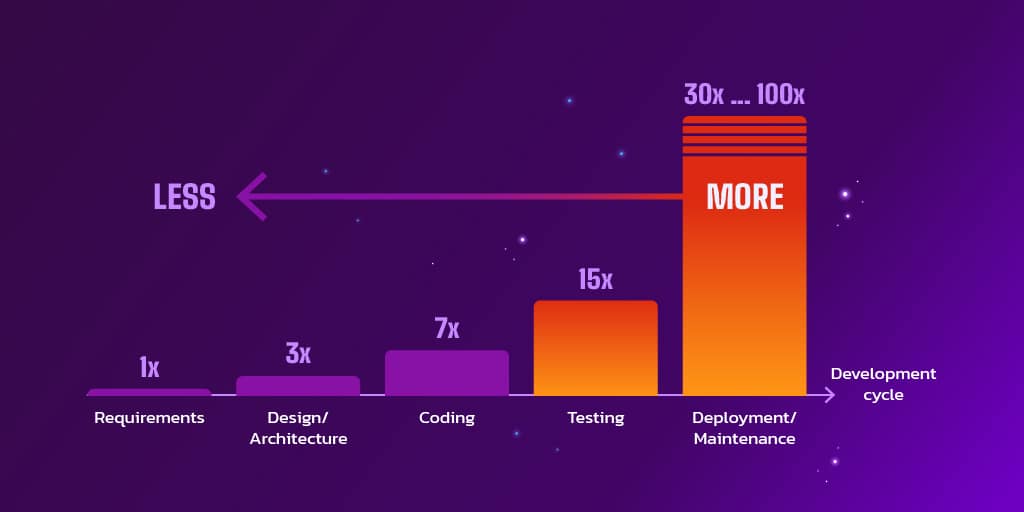Quick Overview
Shift left testing strategies in agile move quality checks, automation, and security reviews to the earliest development stages.
It helps teams uncover unclear requirements sooner, reduce rework, and speed up delivery.
This article shares practical steps, from involving QA early to preparing test data and environments, to build a more reliable release process.
When I first joined an agile team, we kept tripping over the same problem: defects showing up when it was already too late to fix them quietly. Requirements were half-baked, testing started after the party was over, and coverage always felt like a guessing game.
Things finally started to change when we adopted a shift-left mindset. Instead of saving testing for the end, we pulled it right into the start, reviews, validation, and QA running alongside development from day one. Suddenly, fixes were faster, cheaper, and far less painful.
In this article, I’ll walk you through the practical steps that helped us cut down delays and bring clarity to what used to be chaos.
The problem: late testing and blurry requirements
The toughest part wasn’t the code. It was realizing halfway through that no one really agreed on what “done” meant.
Features looked great on paper, with clean stories and nice acceptance criteria. However, once QA got their hands on them, everything fell apart, as missing behaviors, misunderstood rules, and mismatched expectations became apparent.
If that sounds familiar, you’re not alone. Most teams hit this wall at some point. So let me show you what we changed to stop discovering problems after release week.
Shift left testing strategies that actually worked
I experimented with several ways to bring testing earlier into our agile and DevOps flow, but the real progress came when we stopped treating testing as a checkpoint and started treating it as a conversation.
Here’s what made the difference for us:
- QA joined the sprint planning, challenging vague requirements before development even started.
- Developers reviewed acceptance criteria together with testers to surface edge cases early.
- Automated tests ran from the first commit, catching issues while they were still small.
These small shifts didn’t just make requirements clearer; they made collaboration tighter and confidence higher across the team.
1. Added Quality Checks from the Start
Before, testers joined the process only after development was complete. That’s when we often found requirements that were incomplete or misunderstood.
To improve this, we began involving QA from the very beginning. They joined backlog refinement, planning sessions, and design reviews.
This early participation brought much more clarity. Testers could ask questions while requirements were still being shaped, reducing gaps and saving time later.
Research also shows that defects found during design can cost up to 100 times less to fix.
2. Used Automation as an Advantage
Unclear requirements often meant changes mid-cycle. Without automation, those updates slowed progress and stretched delivery times.
To address that, I integrated automation directly into the CI/CD pipeline. We combined unit, integration, API, UI, and performance tests that ran automatically with every change.
This setup gave the team quick feedback and helped prevent minor issues from growing.
Industry studies show that teams with strong automation practices reach 30–50% faster release cycles, and we saw similar results with fewer surprises and quicker recovery.

3. Brought Security to the Beginning
Security gaps were another effect of unclear requirements. Requirements aren’t only about features, they include security and compliance too.
To address this, I incorporated SAST tools, secure code reviews, and light threat modeling during the design stage. That turned potential late-stage problems into an early checklist, reducing risks from the start.
This approach helped us identify vulnerabilities before they had a chance to spread.
Research indicates that more than 50% of security defects appear during the requirements and design phase, proving how much early prevention matters.

4. Prepared Test Data and Environments
One recurring blocker my team faced was the lack of proper test data or environments. Even when requirements were clear, testing often stalled due to missing setups.
To prevent that, I started preparing test data and virtualized environments early in the cycle.
At times, we used mock services or synthetic datasets. They weren’t always perfect, but they kept testing actively while real systems caught up. That kept progress steady and minimized waiting time.
Which Practices I Used to Support the Shift Left Testing Strategies
Having strategies in place was the first step. Making them part of daily work required small, consistent habits within the development process.
Over time, I found that these practices helped clarify requirements and made the shift-left approach a natural part of how we built and tested software.
1. Micro-Level Testing Guidelines
Unclear requirements often caused changes after the code was written. To shorten feedback cycles, I invested in fast, isolated unit tests, often called L0 or L1 tests. These ran within seconds and gave almost immediate results.
For example, Microsoft shared that its teams run 60,000+ tests in under six minutes. I’m not working at that scale, but even a few hundred quick tests gave me the confidence to refactor safely whenever requirements shifted.
2. Feedback Loops
Late discovery of requirement gaps used to slow everything down. To catch them earlier, I made feedback a continuous part of our process.
I tracked signals from automated tests, retrospectives, and pipeline results.
When build failures increased or test instability appeared, it was a clear sign that something in the process needed attention. Acting on those signals early helped us stay consistent and improve each cycle.
According to DORA’s research, teams with faster feedback loops release software 46% more often, and that insight encouraged us to strengthen our own loops.

3. Knowledge Exchange and Training
Unclear requirements often worsen when knowledge across the team isn’t evenly shared. Developers sometimes hesitated to write tests, and testers weren’t always comfortable reading code. That gap caused misunderstandings and small details to slip through.
To fix this, I encouraged cross-team learning through pairing sessions, brown-bag talks, and open discussions on test design. Developers and QA members began collaborating more closely, and as understanding grew, so did the clarity of our requirements.
Challenges I Faced & How to Avoid Them
I’ve seen the impact of shift-left testing strategies firsthand, but adopting it came with real challenges. Change always does.
Here are a few of the obstacles I faced, and what helped me overcome them.
1. Organizational Resistance
One of the biggest challenges I faced was cultural resistance. Some teams saw the shift-left strategy as extra work, while others believed requirements would always evolve, so testing early didn’t seem necessary.
If that sounds familiar, it’s worth paying attention to. What finally changed people’s minds was data.
I showed how fixing a bug after release can cost 30–100 times more than addressing it earlier in the cycle. Once that was clear, support grew quickly.

2. Misaligned Expectations
Another challenge came from unclear roles. Developers weren’t always eager to take part in testing. I remember one team where security checks were seen as QA’s responsibility, and that mindset allowed vulnerabilities to pass unnoticed.
The solution came through training and collaboration.
We used pair programming, ran cross-team workshops, and defined shared quality goals. As developers became more involved, requirements grew clearer and issues decreased.
Summing Up: Start Shifting Left in Your Next Sprint
Looking back, unclear requirements were the main cause of late defects and wasted effort. The shift-left strategy didn’t solve everything at once, but it gave me a practical way to handle those issues early.
My suggestion is simple: choose one strategy and try it in your next sprint.
It could be running quick unit tests, adding static code analysis, or involving testers in backlog refinement. Even small steps can make a noticeable difference.
And if you want to make the process easier, Apwide Golive can support your shift-left efforts by helping manage environments and keeping releases visible across teams.
Stay consistent, refine your approach, and the improvements will show with time.
Key Takeaways
- Involve QA early to catch defects and clarify requirements.
- Add security testing from the start over 50% of vulnerabilities appear in the design phase.
- Prepare test data and environments in advance to keep delivery on track.
- Use fast unit tests (L0/L1) to give developers confidence in every change.
- Maintain strong feedback loops with retrospectives, metrics, and pipelines.







